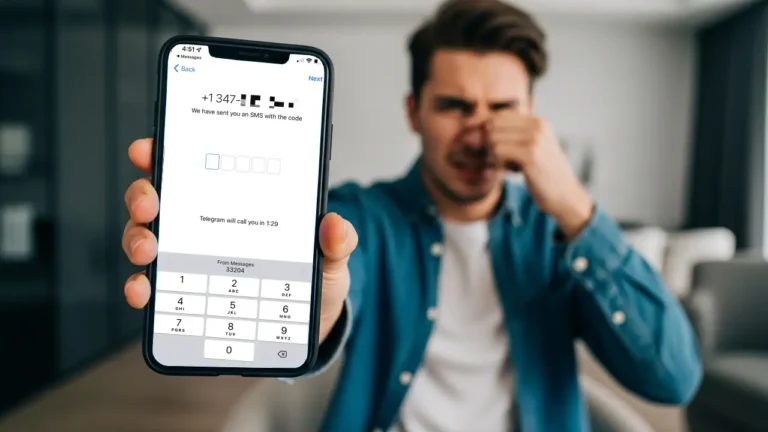Top 7 Ring Privacy Settings You Should Change Right Now (Protect Your Camera in 2025)
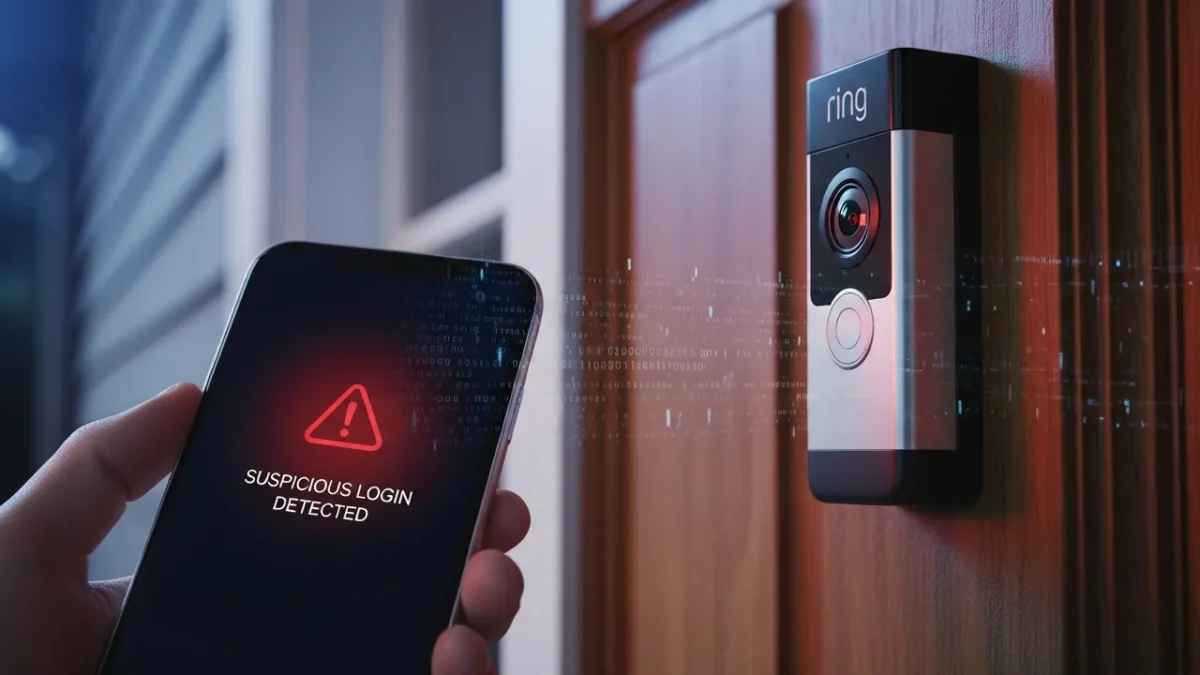
If you own a Ring camera, now’s the time to double-check your privacy settings. After the recent surge in suspicious login reports — which Ring attributes to a “visual bug” — many users are left wondering: Is my home security truly secure?
Smart home devices like Ring make life more convenient, but they also open doors—literally and digitally—to potential intrusions. Whether you’re a new user or a longtime Ring customer, outdated settings or overlooked permissions could be putting your family’s privacy at risk.
In this guide, we’ll walk you through 7 critical Ring privacy settings you should change right now to secure your account, protect your video feeds, and keep unwanted eyes out. These are expert-recommended steps designed to shield your smart home from both hackers and hidden vulnerabilities in 2025 and beyond.
Let’s lock things down.
Quick Guide: Your Ring Security Checklist
Pressed for time? Here’s a quick summary of the essential settings to update on your Ring account to boost your privacy and security:
- Enable Two-Factor Authentication (2FA): Adds a critical layer of protection against unauthorized access.
- Remove Unknown or Inactive Devices: Kick out suspicious logins and clean up device history.
- Manage Shared Users Carefully: Limit access to only trusted individuals.
- Disable Public Video Sharing & Sidewalk: Prevent your footage from being shared beyond your home network.
- Control Smart Home Integrations: Review third-party app access that may expose your data.
- Set Motion Zones & Privacy Areas: Avoid recording sensitive areas like neighbors’ property or private rooms.
- Update Your Ring App & Firmware Regularly: Security patches often fix vulnerabilities before hackers can exploit them.
Now, let’s dive into each one in detail so you can lock down your Ring setup with confidence.
Secure Your Ring Camera: 7 Essential Steps
Let’s walk through each setting, why it’s critical, and how to implement it to protect your Ring account in 2025.
Step 1: Lock Your Account with Two-Factor Authentication (2FA)
Why It’s Critical: Hackers can crack weak passwords, as seen in recent Ring breaches shared on X. 2FA adds a second verification step, like a code sent to your phone, making unauthorized access nearly impossible.
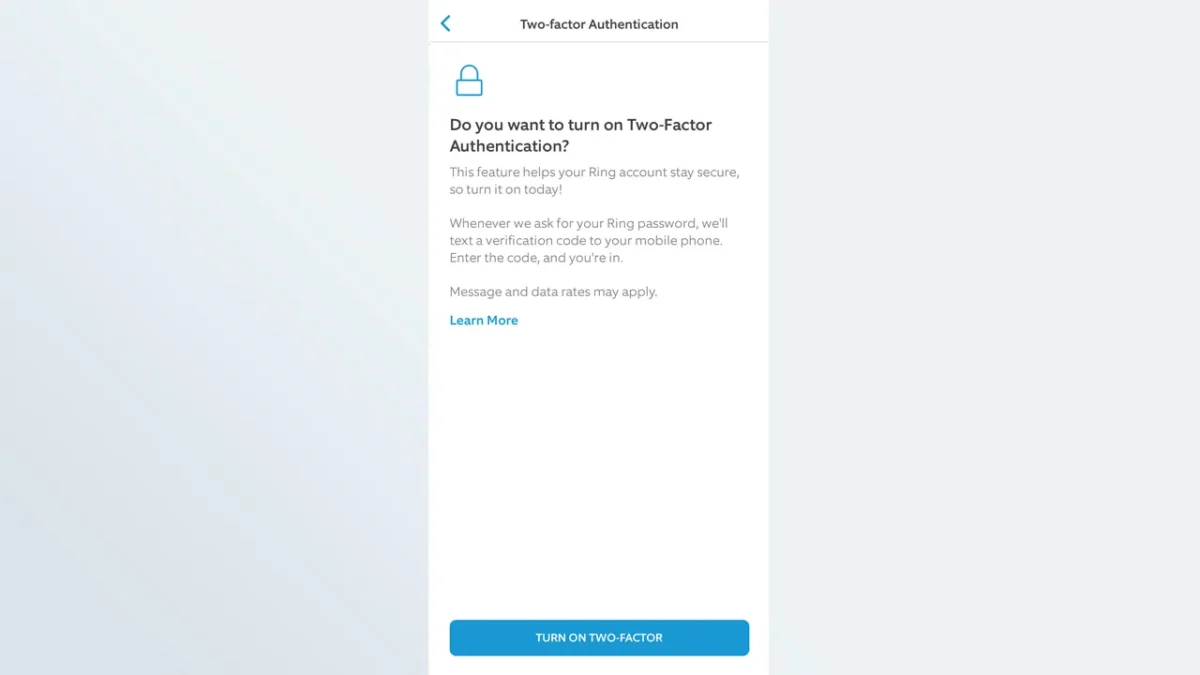
How to Set It Up:
- Open the Ring app, tap the menu (☰), and select Control Center.
- Choose Two-Factor Authentication and tap Turn On Two-Factor.
- Enter your password, then add a phone number or authenticator app (e.g., Authy).
- Input the six-digit code received and tap Continue.
Pro Tip: Opt for an authenticator app over SMS to dodge SIM-swapping attacks. Check login alerts weekly to spot odd activity.
Step 2: Hide Sensitive Areas with Privacy Zones
Why It’s Critical: Recording neighbors’ property can violate 2025’s stricter privacy laws. Privacy Zones black out areas like windows or yards, keeping your footage compliant and private.
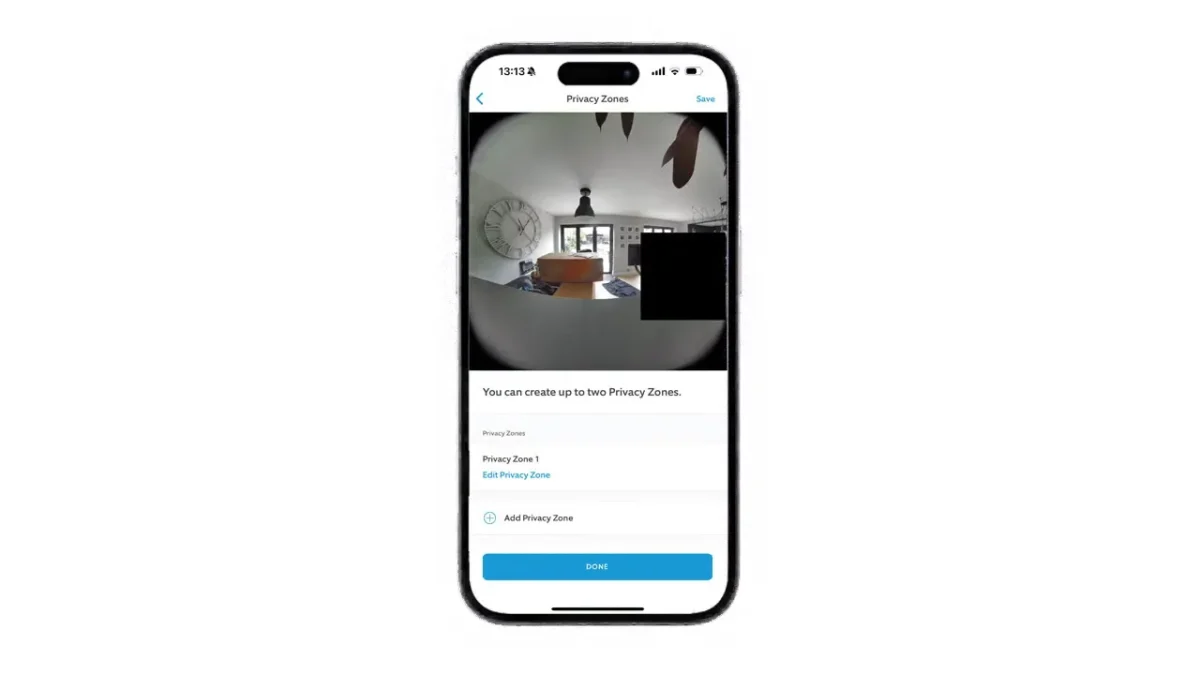
How to Set It Up:
- In the Ring app, tap the menu (☰) and select Devices.
- Pick your camera, then go to Device Settings > Privacy Zones.
- Draw up to two zones to block (e.g., a neighbor’s porch).
- Save; these areas will appear blacked out in videos.
Pro Tip: Adjust zones after moving your camera, and pair with Motion Zones to reduce false alerts.
Step 3: Silence Audio to Prevent Eavesdropping
Why It’s Critical: Hackers have exploited Ring’s two-way audio to listen or speak through cameras. Disabling audio protects private conversations from IoT security breaches.

How to Set It Up:
- Open the Ring app, tap the menu (☰), and select Devices.
- Choose your camera, then go to Device Settings > Audio Streaming and Recording.
- Toggle off audio (note: requires a Ring Home Plan for full control).
- Use Activate Once for temporary audio needs.
Pro Tip: Only enable audio for specific tasks, like talking to delivery drivers. Verify your plan, as some settings need a subscription.
Step 4: Boot Suspicious Devices from Your Account
Why It’s Critical: X posts flagged unknown devices accessing Ring accounts, a sign of potential hacks. Regularly auditing devices ensures only trusted ones view your feeds.
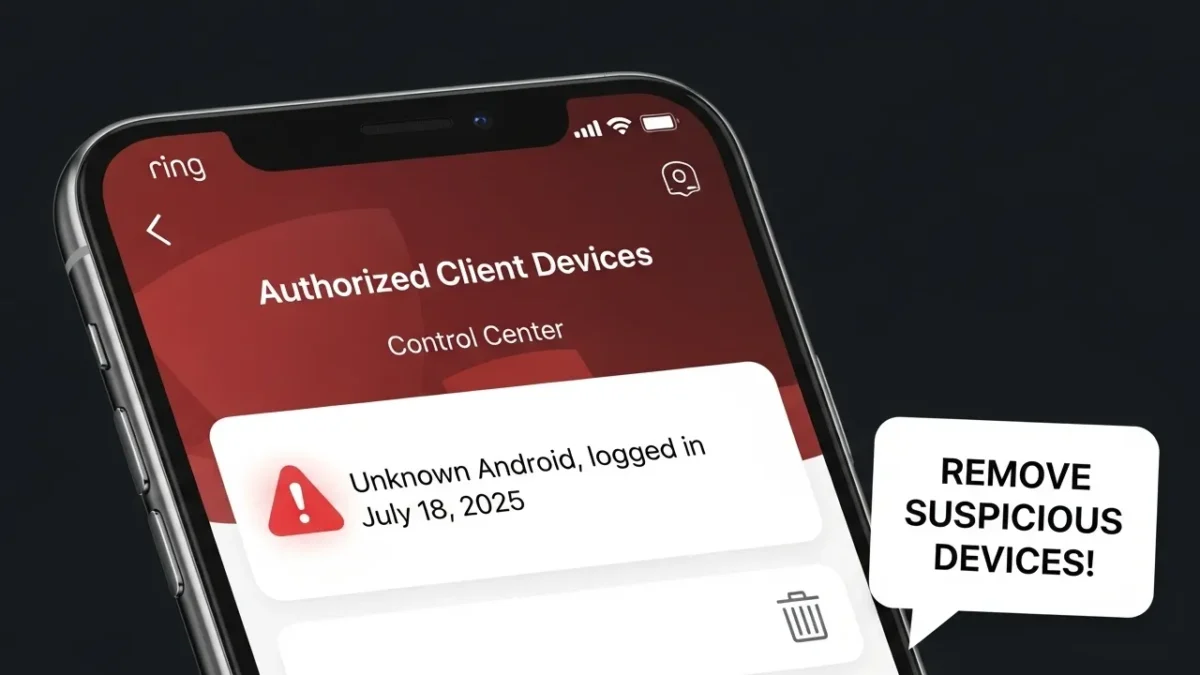
How to Check and Remove Devices:
- In the Ring app, tap the menu (☰) and go to Control Center.
- Select Authorized Client Devices to see logged-in devices.
- Look for unfamiliar entries (e.g., unknown phones or odd login times).
- Tap the trash can icon to remove suspicious devices or Remove All for a full reset.
Pro Tip: After removing devices, update your password and enable 2FA. Use a unique email for your Ring account to limit exposure.
Callout: Stay Vigilant! Check for suspicious devices monthly, especially after security alerts on X, to catch breaches early.
Step 5: Block Law Enforcement Video Requests
Why It’s Critical: Ring’s Neighbors app lets police request footage, raising smart home privacy concerns. Opting out ensures your videos stay private unless you choose to share.
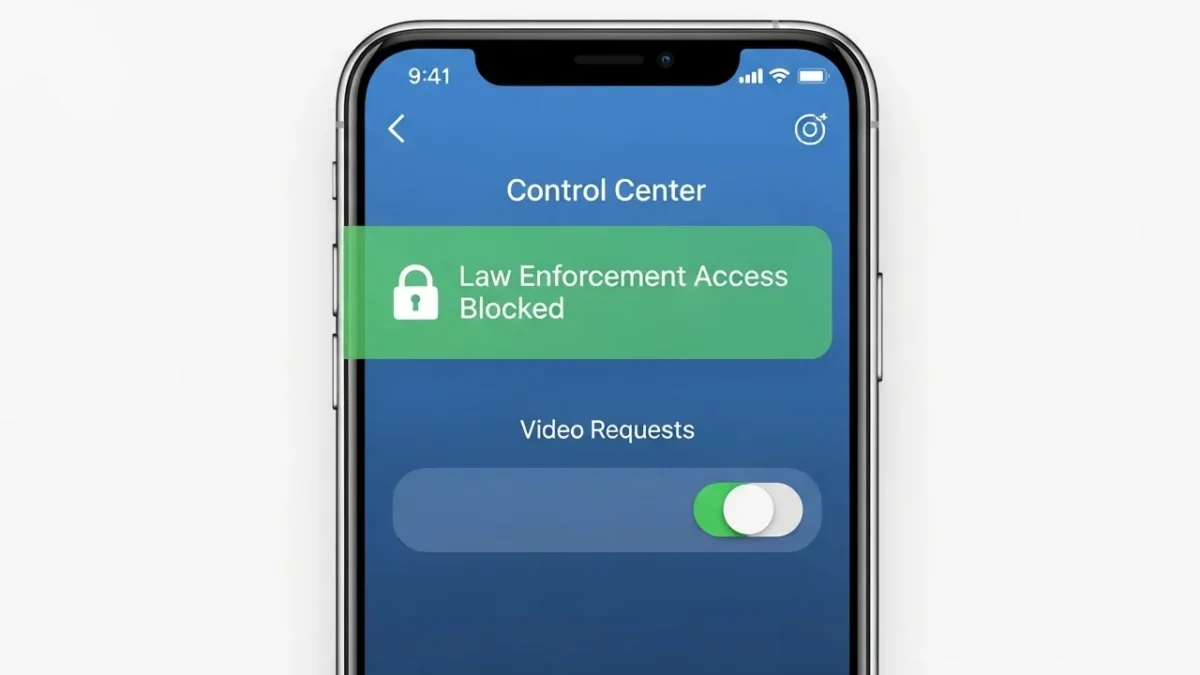
How to Opt Out:
- Open the Ring app, tap the menu (☰), and select Control Center.
- Go to Video Requests and toggle it off.
- Confirm to disable law enforcement access.
Pro Tip: Know your local privacy laws, as some regions require consent for sharing. You can still share footage manually if needed.
Step 6: Fortify Your Account with a Strong Password
Why It’s Critical: Weak or reused passwords are a hacker’s dream, fueling Ring account breaches. A unique, complex password is your first line of defense.
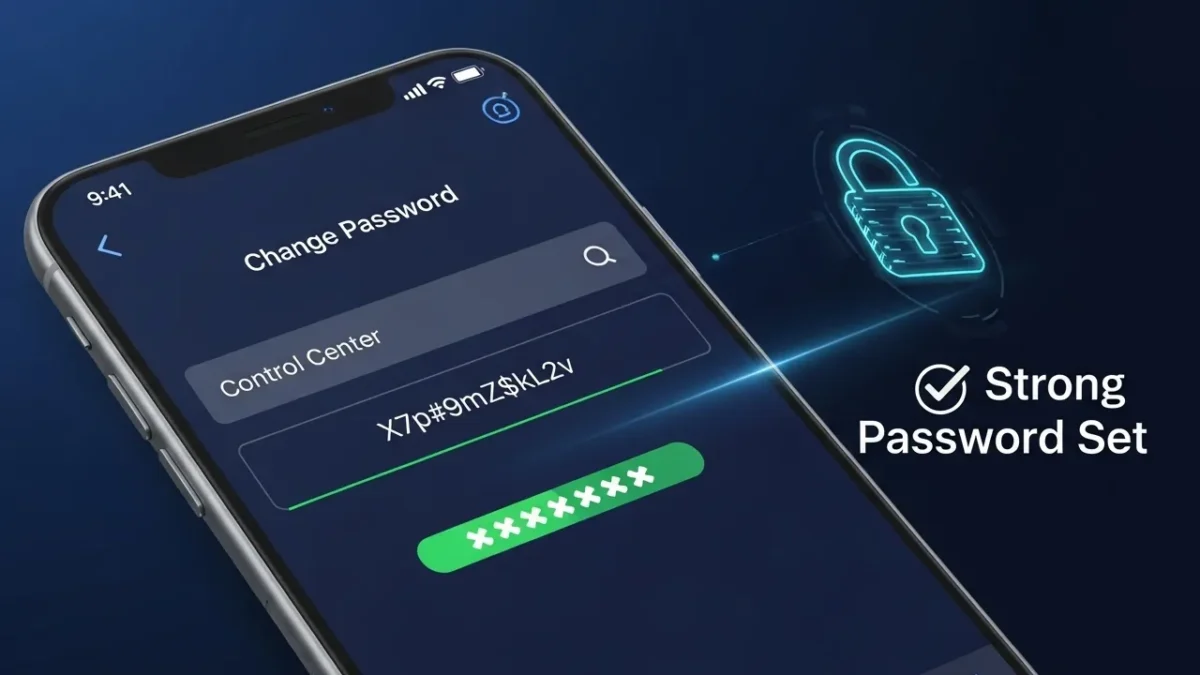
How to Update It:
- In the Ring app, tap the menu (☰) and go to Control Center > Account Settings.
- Select Change Password, enter your current password, then create a new one (12+ characters, mix of letters, numbers, symbols).
- Save and re-authenticate on all devices.
Pro Tip: Use a password manager like 1Password to generate and store unique passwords, preventing credential-stuffing attacks.
Step 7: Activate End-to-End Encryption (E2EE)
Why It’s Critical: E2EE ensures only you can view your Ring videos, even if servers are compromised. It’s a must for 2025’s heightened IoT security needs.
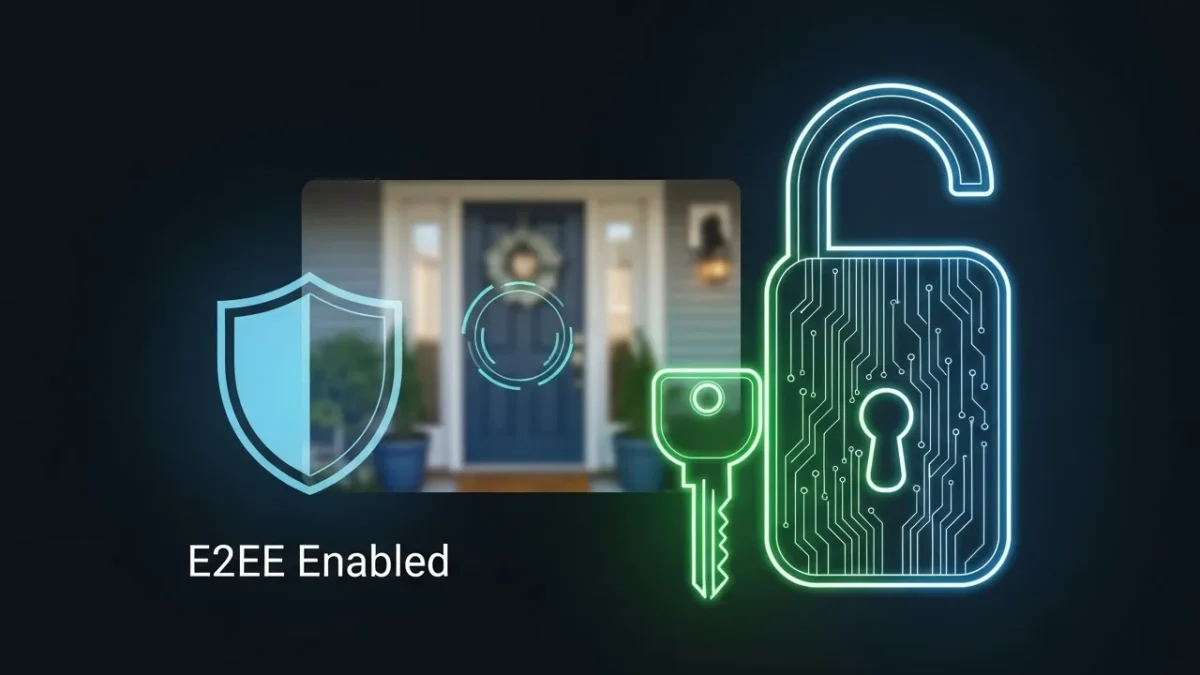
How to Enable It:
- Open the Ring app, tap the menu (☰), and go to Control Center > Video Encryption.
- Select Advanced Settings and toggle on End-to-End Encryption.
- Set up a secure key and store it safely (e.g., in a password manager).
- Confirm to activate.
Pro Tip: Back up your E2EE key securely, as losing it locks you out of your videos permanently.
Callout: Why E2EE Matters E2EE is your ultimate shield, ensuring no one—not even Ring—can access your footage without your key.
Spotting Suspicious Activity: How to Audit Your Ring Account
Hackers accessing your Ring account can compromise your smart home security. Here’s how to check for unauthorized devices and secure your camera:
Steps to Audit Your Account:
- Launch the Ring App: Open on your phone or tablet.
- Go to Control Center: Tap the menu (☰) > Control Center.
- Check Devices: Select Authorized Client Devices to view all logged-in devices (e.g., “iPhone 15, last login: July 18, 2025”).
- Spot Red Flags: Look for unknown devices or logins from unfamiliar locations (e.g., a device in another country).
- Remove Threats: Tap the trash can icon next to suspicious devices or select Remove All to log out everything.
- Lock It Down: Change your password (Step 6), enable 2FA (Step 1), and monitor Event History for odd activity.
Navigation Note: The menu (☰) is at the top-left of the Ring app’s home screen. Authorized Client Devices shows device details and timestamps for easy auditing.
Expert Tip: Set a monthly reminder to check devices, especially after X posts about suspicious logins, to stay ahead of hackers.
People Also Ask: Your Ring Security Questions Answered
These concise, snippet-ready answers target Google’s PAA boxes, optimized with schema markup for maximum visibility.
How Do I Know If My Ring Camera Was Hacked?
Signs include unknown devices in Control Center, unexpected login alerts, strange audio from your camera, or unfamiliar recordings in Event History. Remove suspicious devices, enable 2FA, and update your password.
What’s the Most Secure Ring Camera Setting?
End-to-end encryption (E2EE) is the most secure, locking videos to only you. Pair with 2FA and a strong password for top-tier protection.
Can Someone Spy on My Ring Camera?
Yes, hackers can spy if you skip 2FA, use weak passwords, or allow unauthorized devices. Enable 2FA, E2EE, and audit devices to block spying.
Should I Reset My Ring After a Security Scare?
Yes, reset your Ring device after a scare. Change your password, enable 2FA, remove unauthorized devices, and factory reset via Device Settings > General Settings > Remove This Device. Re-set up with new credentials.
Take Control of Your Ring Camera Today
Your Ring camera is only as secure as its settings. By following these seven steps—enabling 2FA, setting Privacy Zones, disabling audio, auditing devices, opting out of video requests, using strong passwords, and activating E2EE—you can shield your smart home from 2025’s cyber threats.
Don’t wait for a hacker to exploit your device. Check Ring’s security updates at ring.com, monitor X for real-time alerts, and update your settings now to keep your home safe and private.


